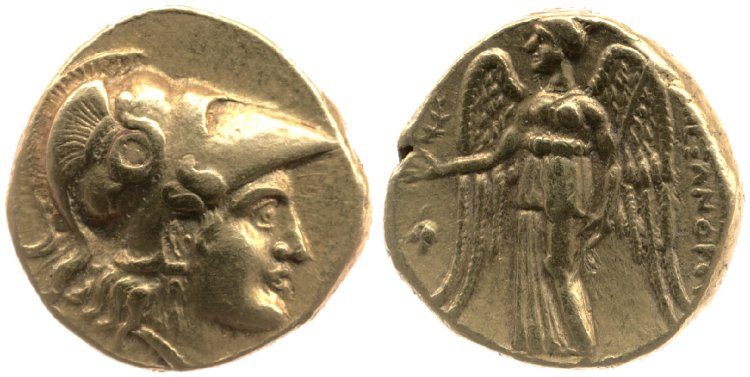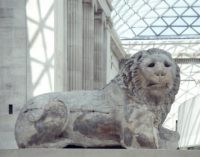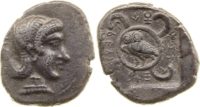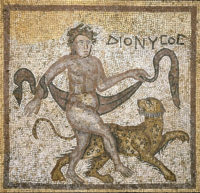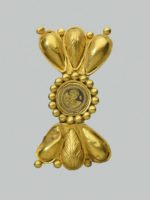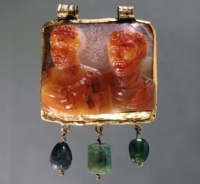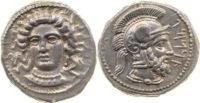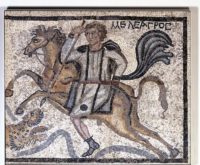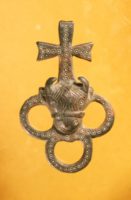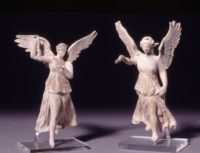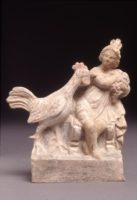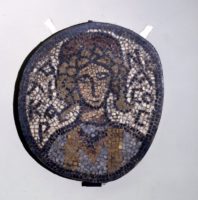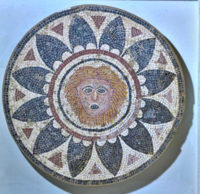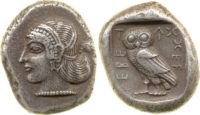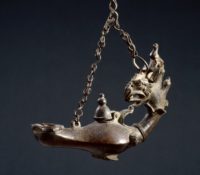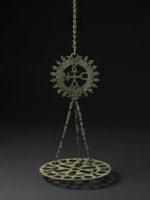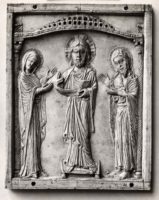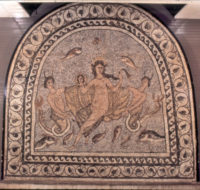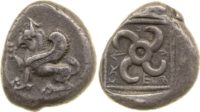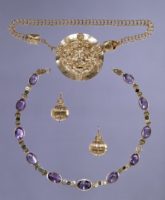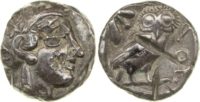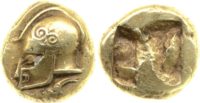Gold Coin of Alexander the Great (obverse) Head of young Herakles, right, in lion scalp. Date: 323BC-280BC (circa). (reverse) Zeus seated, left, holding eagle and sceptre. Minted in: Anatolia, Modern Turkey. British Museum is closed 24, 25 and 26 December and 1 January, but is open every other day of the year. Fast facts about the British Museum: Founded: 1753, Collection size: 8 million objects, Oldest object in the collection: Stone chopping tool (nearly 2 million years old).
Booking.comCenser; Period: Early Byzantine; circa: 6thc.-7thc.; Found: Syria. Materials: copper alloy. Dimensions: Diameter: 79 millimetresLength: 475 millimetres (suspension unit)Height: 61 millimetres. British Museum is closed 24, 25 and 26 December and 1 January, but is open every other day of the year. Fast facts about the British Museum: Founded: 1753, Collection size: 8 million objects, Oldest object in the collection: Stone chopping tool (nearly 2 million years old).
Lamp for suspension; Period: Early Byzantine. circa: 4thc-5thc. Materials: Brass; the curved handle in the shape of the head and neck of a crested dragon holding an apple in its mouth, and bearing on its head a sacred monogram surmounted by a dove. Subjects:leaf, fruit, dragon and bird. Found Place: Herculaneum, Naples.
Dimensions: Length: 21 centimetresHeight: 15.7 centimetres (lamp)Width: 7.2 centimetresHeight: 41.2 centimetres (including chain)Weight: 1.126 kilograms. British Museum is closed 24, 25 and 26 December and 1 January, but is open every other day of the year. Fast facts about the British Museum: Founded: 1753, Collection size: 8 million objects, Oldest object in the collection: Stone chopping tool (nearly 2 million years old).
Ivory Panel, Period: Early Byzantine, circa: 6th c. Made in: Syria. Dimensions: Height: 16.3 centimetres Width: 8.1 centimetres Depth: 1 centimetres Weight: 128 grammes. Carved in relief with a depiction of The Baptism: young Christ standing full face up to waist in water; to left, St John the Baptist stands leaning forward upon a rock, one hand resting upon Christ’s head. British Museum is closed 24, 25 and 26 December and 1 January, but is open every other day of the year. Fast facts about the British Museum: Founded: 1753, Collection size: 8 million objects, Oldest object in the collection: Stone chopping tool (nearly 2 million years old).
Polycandelon in the form of a pierced disk with openwork cross and nine circular perforations; Period: Early Byzantine, circa: 6thc.-7thc. Materials: copper alloy. Dimensions: Diameter: 279 millimetresHeight: 757 millimetres (suspended)Weight: 1.626 kilograms. British Museum is closed 24, 25 and 26 December and 1 January, but is open every other day of the year. Fast facts about the British Museum: Founded: 1753, Collection size: 8 million objects, Oldest object in the collection: Stone chopping tool (nearly 2 million years old).
Ivory Panel, carved with standing figures, Christ with the Virgin Mary and St John, below a pierced canopy; four holes for attachment in the raised border. Period: Middle Byzantine circa: 10thc. Materials: Ivory. British Museum is closed 24, 25 and 26 December and 1 January, but is open every other day of the year. Fast facts about the British Museum: Founded: 1753, Collection size: 8 million objects, Oldest object in the collection: Stone chopping tool (nearly 2 million years old).
Mosaic Pavement; Period: Late Roman; circa: 4th c.; Excavated/Place: Halicarnassus, Modern Turkey, Aegean Region, Anatolia. Materials: stone. Dimensions: Height: 1.4 metres Length: 1.67 metres. Museum Description: Part of a panel from a mosaic pavement: Meleager, on horseback, spears a leopard. The panel is inscribed in Greek with the hero’s name.
British Museum is closed 24, 25 and 26 December and 1 January, but is open every other day of the year. Fast facts about the British Museum: Founded: 1753, Collection size: 8 million objects, Oldest object in the collection: Stone chopping tool (nearly 2 million years old).
Mosaic of Venus and Tritons, Period: Late Roman; circa: 4th c.; Materials: stone. Dimensions: Height: 1.96 metres Width: 2.11 metres (at base) Excavated/Place: Caria, Bodrum, Hadji Captan’s Field (Halicarnassus). Excavated by: Sir Charles Thomas Newton, 1857. Museum Description: Venus is seated on a twisted shell, which is seen to the right; In her right hand she holds a circular mirror which reflects her full face; in her left hand she holds a long tress of hair; behind her is a veil held by a Triton on either side; the Tritons have curling forked tails and a pair of claws on their heads; below are two dolphins, one crab, and three. British Museum is closed 24, 25 and 26 December and 1 January, but is open every other day of the year. Fast facts about the British Museum: Founded: 1753, Collection size: 8 million objects, Oldest object in the collection: Stone chopping tool (nearly 2 million years old).
Roman Mosaic, Period: Late Roman; circa: 4th c.; Excavated/Place: Caria, Bodrum, Hadji Captan’s Field (Halicarnassus), Anatolia. Materials: stone. Dimensions: Diameter: 105.41 centimetres. Museum Description: Stone mosaic; medallion with mask of Phobos in the centre of rosette with 12 petals; triangles between rosette petals; the mask is red-brown and ochre; rosette petals are black and the triangles are red-brown. British Museum is closed 24, 25 and 26 December and 1 January, but is open every other day of the year. Fast facts about the British Museum: Founded: 1753, Collection size: 8 million objects, Oldest object in the collection: Stone chopping tool (nearly 2 million years old).
Circular mosaic. Personification of the city of Halicarnassus. Period: Late Roman; circa: 4th c.; Excavated/Place: Halicarnassus, Modern Turkey, Aegean Region, Anatolia. Materials: stone. Dimensions: Height: 54.5 centimetres Width: 49.5 centimetres. British Museum is closed 24, 25 and 26 December and 1 January, but is open every other day of the year. Fast facts about the British Museum: Founded: 1753, Collection size: 8 million objects, Oldest object in the collection: Stone chopping tool (nearly 2 million years old).
The Lion of Knidos, Museum Description: Colossal marble statue of a recumbent lion; carved with inlaid eyes originally probably of glass, but now missing. Period: Hellenistic, circa: 2nd century BC. Excavated/Findspot: Knidos, Lion Tomb (Turkey, Aegean Region, Caria, Knidos Ancient City, Anatolia). Materials: marble, glass (eyes). Technique: inlaid (eyes) carved. Dimensions: Length: 2.89 metres Height: 1.82 metres. Location: Not on display (Great Court) Acquisition date: 1859, Discovered by Richard Pullan during Charles Newton’s excavations in 1858; removed by Robert Murdoch Smith; brought back on HMS Supply. British Museum is closed 24, 25 and 26 December and 1 January, but is open every other day of the year. Fast facts about the British Museum: Founded: 1753, Collection size: 8 million objects, Oldest object in the collection: Stone chopping tool (nearly 2 million years old).
[xyz-ihs snippet="British-Museum"]Silver Coin, Period: 5thc. B.C., Ancient Greek circa: 480 B.C-460 B.C, Ruler: Taththivaibi, Minted in: Lycia (Modern Turkey, Anatolia) Museum Description: Head of Aphrodite left, rows of formal curls on fore-head, hair fastened by band passing three times round it, and caught up behind; truncation on neck dotted; symbol, resembling T on neck. (reverse) Tetraskeles right, members of which divide the legend; in inner ring, owl standing left, head to front; symbol at beginning of inscription: the whole. British Museum is closed 24, 25 and 26 December and 1 January, but is open every other day of the year. Fast facts about the British Museum: Founded: 1753, Collection size: 8 million objects, Oldest object in the collection: Stone chopping tool (nearly 2 million years old).
[xyz-ihs snippet="British-Museum"]Silver Coin, Period: 5th c. 410 B.C. (circa) Minted in Lycia, Anatolia, Turkey. Ruler: Khariga, Materials: silver. Museum Description: Head of Aphrodite left, rows of formal curls on fore-head, hair fastened by band passing three times round it, and caught up behind; truncation on neck dotted; symbol, resembling T on neck.
(reverse) Tetraskeles right, members of which divide the legend; in inner ring, owl standing left, head to front; symbol at beginning of inscription: the whole. British Museum is closed 24, 25 and 26 December and 1 January, but is open every other day of the year. Fast facts about the British Museum: Founded: 1753, Collection size: 8 million objects, Oldest object in the collection: Stone chopping tool (nearly 2 million years old).
Silver Coin, Period: 5th. century B.C. 480BC-460BC (circa). Minted in Lycia, Anatolia, Modern Turkey. Ruler: Taththivaibi Museum Description: “(obverse) Griffin, curved wing, seated left; right forepaw raised. (reverse) Tetraskeles left; in dotted incuse square.” British Museum is closed 24, 25 and 26 December and 1 January, but is open every other day of the year. Fast facts about the British Museum: Founded: 1753, Collection size: 8 million objects, Oldest object in the collection: Stone chopping tool (nearly 2 million years old).
Museum Description: “Pair of gold earrings in the shape of a half globe with a small disc above, decorated in relief with a female dramatic mask.” Period: Roman, circa: 2nd century A.D. Made in/Findspot: Miletopolis, Modern Turkey, Aegean Region, Anatolia. Dimensions: Height: 3.81 centimetres. British Museum is closed 24, 25 and 26 December and 1 January, but is open every other day of the year. Fast facts about the British Museum: Founded: 1753, Collection size: 8 million objects, Oldest object in the collection: Stone chopping tool (nearly 2 million years old).
Museum Description: “Silver coin.(obverse) Head of Athena right, wearing earring and crested helmet decorated with olive-leaves. (reverse) Owl within incuse square, right; to left, olive-spray and crescent.” Period: 5 th century B.C., Minted in: Athens, Greece; Excavated/Findspot: Cilicia (Anatolia, Modern Turkey). British Museum is closed 24, 25 and 26 December and 1 January, but is open every other day of the year. Fast facts about the British Museum: Founded: 1753, Collection size: 8 million objects, Oldest object in the collection: Stone chopping tool (nearly 2 million years old).
Silver Coin, Period: 4 th century B.C. 330BC (circa); Museum Description: “Silver coin.(obverse) Head of nymph Sinope waring earring. (reverse) Eagle above dolphin.” Minted in: Sinope (Modern Turkey, Black Sea Region Sinop Province) British Museum is closed 24, 25 and 26 December and 1 January, but is open every other day of the year. Fast facts about the British Museum: Founded: 1753, Collection size: 8 million objects, Oldest object in the collection: Stone chopping tool (nearly 2 million years old).
Silver Coin. Period: 4th century B.C. 378BC-372BC (circa). Minted in: Tarsus (Modern Turkey, Mediterranean Region, Mersin (province),Anatolia ) Ruler: Datames. Museum Description: “(obverse) Female head facing. (reverse) Bearded head with crested helmet l.” British Museum is closed 24, 25 and 26 December and 1 January, but is open every other day of the year. Fast facts about the British Museum: Founded: 1753, Collection size: 8 million objects, Oldest object in the collection: Stone chopping tool (nearly 2 million years old).
Silver coin, Period: 4 th. century B.C. 378BC-372BC (circa), Ruler: Datames, Minted in: Tarsus (Modern Turkey, Mersin Province) Museum Description: “Silver coin.(obverse) Baal seated r. (reverse) An standing r. facing Tarkumuwa.” British Museum is closed 24, 25 and 26 December and 1 January, but is open every other day of the year. Fast facts about the British Museum: Founded: 1753, Collection size: 8 million objects, Oldest object in the collection: Stone chopping tool (nearly 2 million years old).
Electrum Greek Coin. Period: 6th c. B.C. circa: 521BC-478BC; Minted in: Phocaea (Asia, Modern Turkey,Marmara Region, Phocaea) Weight: 2.547 grammes. British Museum is closed 24, 25 and 26 December and 1 January, but is open every other day of the year. Fast facts about the British Museum: Founded: 1753, Collection size: 8 million objects, Oldest object in the collection: Stone chopping tool (nearly 2 million years old).


